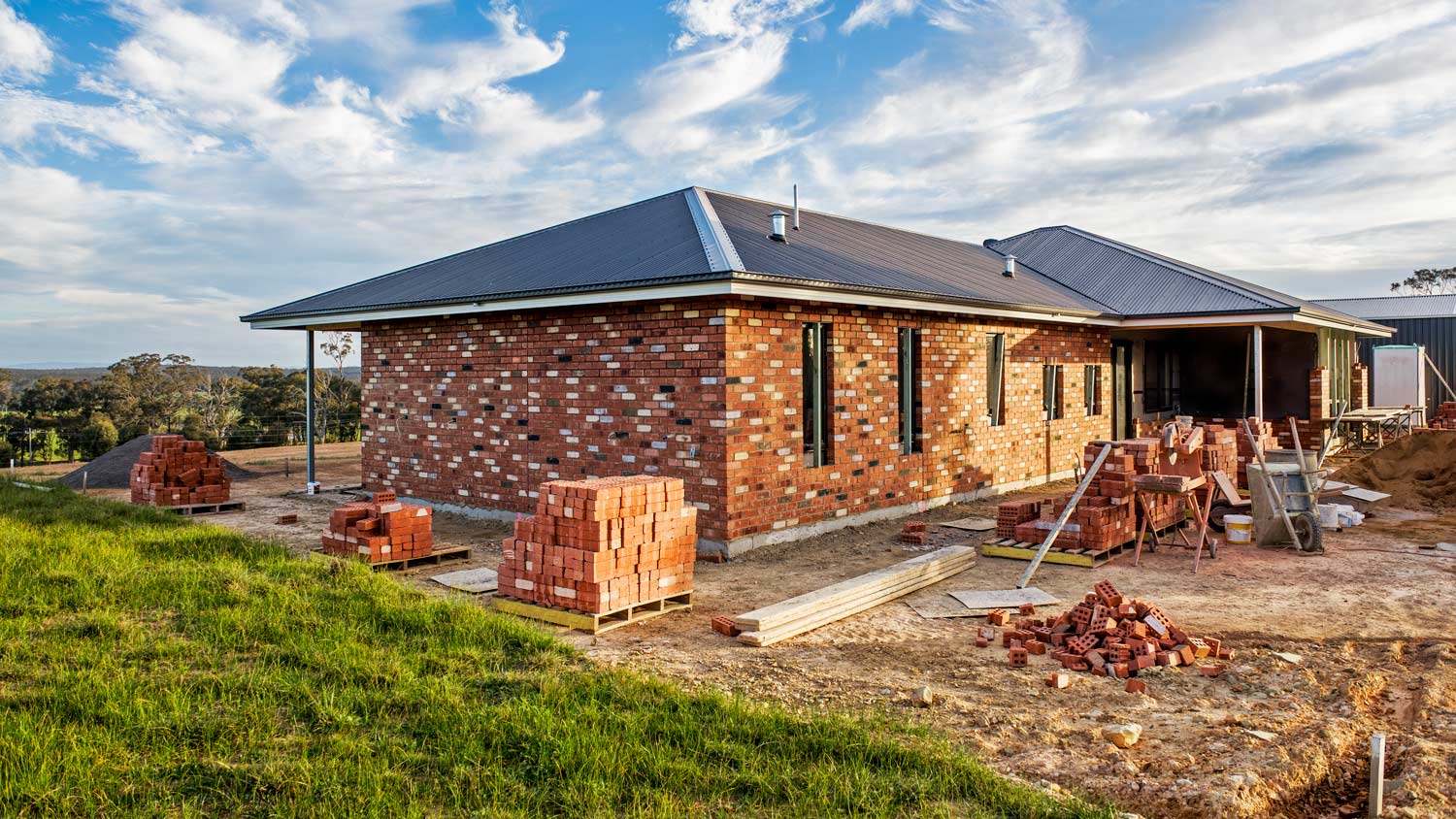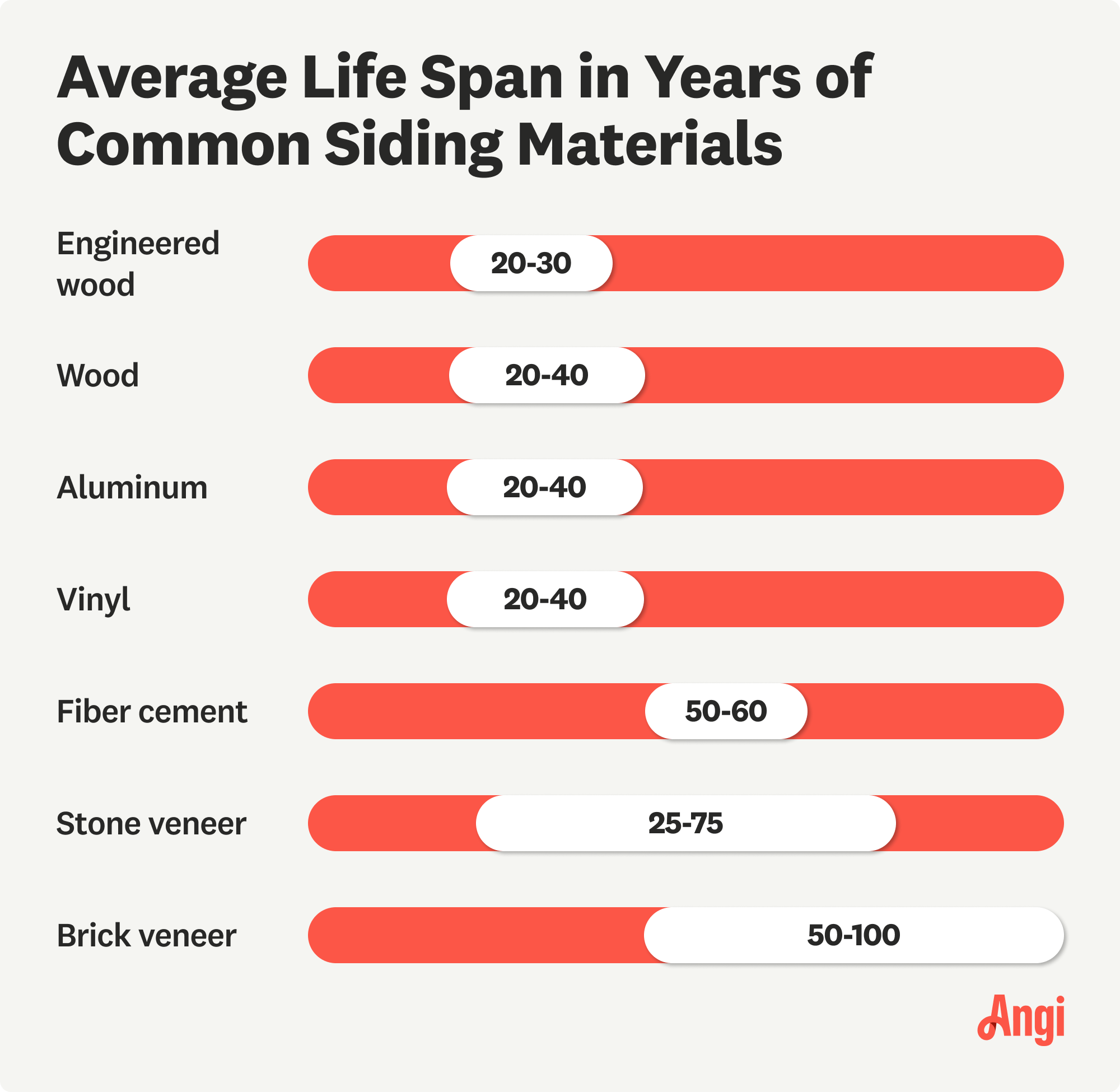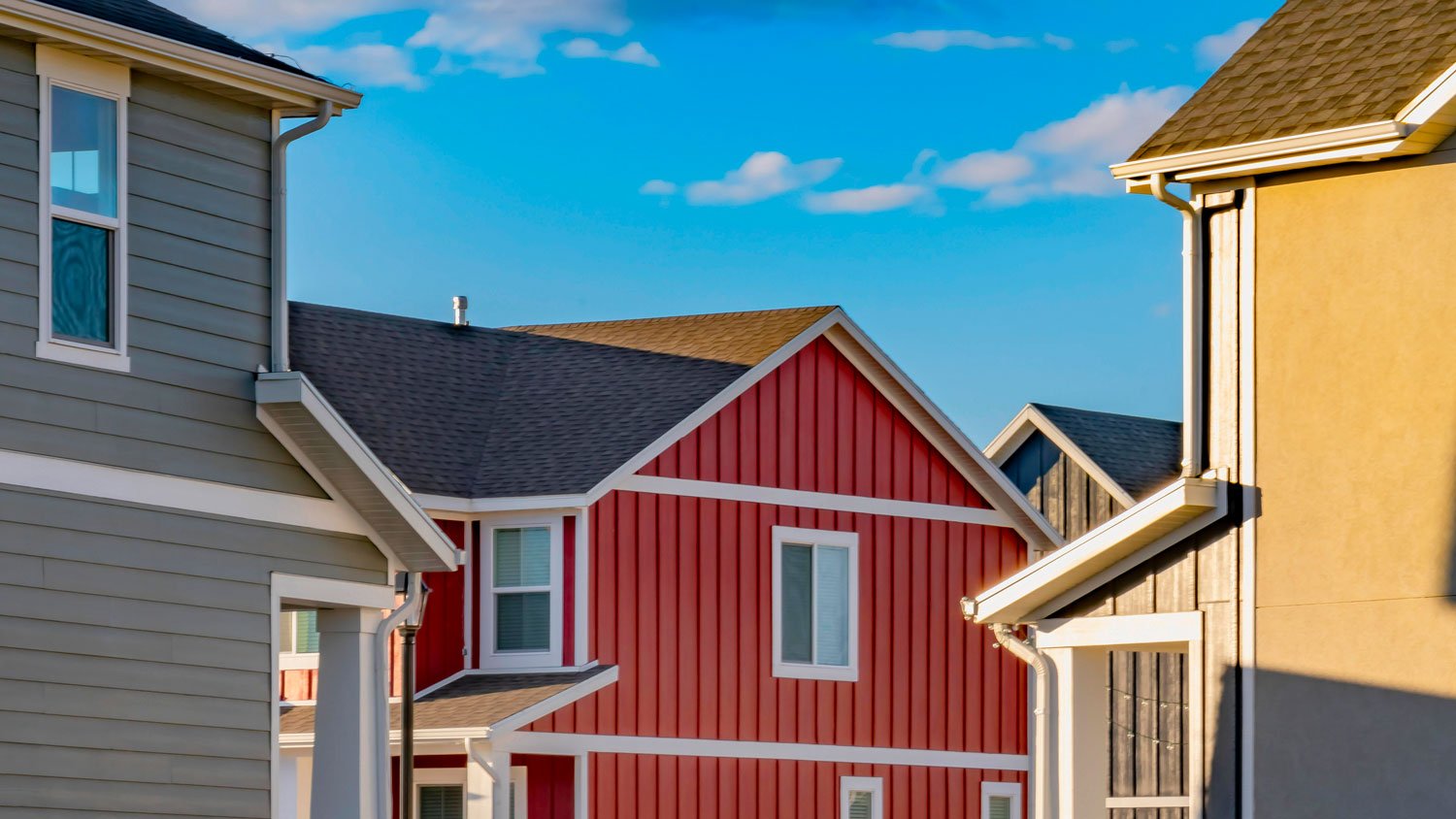
Siding repairs offer much-needed protection against New York's heavy snowfall and harsh winters. Learn about siding repair costs in New York.
Build your dream home brick by brick


Brick siding usually costs between $12 and $22 per linear foot.
Brick siding is more durable and low maintenance than many other siding materials.
Replacing your siding with brick can increase your home’s value.
Wondering whether you can replace your home’s siding with brick? The answer is yes, and it’s a great way to boost your home’s curb appeal. No matter whether you currently have vinyl, fiber cement, or any other type of siding, you can hire a local siding contractor to remove and replace it with brick. Use this guide to learn all about the key factors to consider before replacing your siding with brick, including durability, cost, and structural considerations.

The short answer is yes, a local siding contractor can often replace another siding material with brick. However, there are several factors to consider before doing so.
Since brick is considerably heavier than most other siding materials, it’s critical to consult a structural engineer to ensure your home can bear the weight of brick siding. In some cases, you might need a new foundation or additional structural support to accommodate the additional weight.
Building permits are often required for significant exterior modifications, such as updating your siding material. Permit costs vary by location, but they usually cost between $100 and $500. Often, the company you hire to replace your siding will handle the permit process for you.
You also need to ensure that the brick siding adheres to local codes and regulations, so make sure that the company you choose is familiar with local codes, which differ by location, and has a clear plan for adhering to them.
Replacing your siding with brick generally involves removing the existing siding, preparing the surface for proper adhesion, and installing the brick, piece by piece. The brick’s heavy weight, coupled with the precision needed to lay it properly, means that this is a job that’s best left to the professionals.
Brick siding generally has good insulation properties, but you may need to update your existing insulation to work most effectively with this new material. Additionally, if you live in an area with lots of moisture, it’s important to seal the brick and create proper drainage to prevent water damage.

Replacing your siding with brick can bring many benefits, but there are some drawbacks to consider as well. Here’s a breakdown of the pros and cons to help you make an informed choice for your home.
Highly durable
Long lifespan
Low maintenance
Classic appearance
Energy efficient
Potentially reduces outside noise
Expensive
Requires a strong foundation
Limited aesthetic options
Time-consuming installation
Expensive and difficult to repair
Brick is just one of several siding materials, so it’s helpful to consider the differences between brick and other materials before booking a siding replacement.
Brick is exceptionally durable and tends to last significantly longer than other siding materials. It’s also highly fire-, weather, and pest-resistant. The durability of other siding materials heavily depends on the material. Vinyl siding is fairly resistant to weathering and decay, but it’s more easily damaged by impact and extreme temperatures than brick.
Meanwhile, wood siding offers a classic appearance and more durability than vinyl, but it’s also fairly expensive, high maintenance, and susceptible to rot.
Aside from stone, brick siding costs the most to install, ranging from $12 to $22 per linear foot. Meanwhile, vinyl siding typically costs between $5 and $11 per linear foot, while wood costs $5 to $15, and aluminum and steel siding costs between $5 and $9 per linear foot.
Brick is among the most low-maintenance siding materials you can install. Its exceptional durability and weather resistance mean that you almost never need to maintain it aside from an annual cleaning and the occasional mortar repair.
Other siding materials usually require more maintenance. For instance, wood siding requires regular painting and staining. Vinyl siding doesn’t usually require new paint, but it tends to accumulate dirt, algae, and mold, which calls for regular cleanings and, in some cases, replacements.
Brick offers a classic, timeless appearance that many people value, so updating your siding to brick can boost your home’s curb appeal and increase its value to potential buyers. However, other siding materials offer more variety in terms of appearance. For instance, vinyl siding comes in many more colors and sizes than brick.
They reinstalled my reverse osmosis system, including changing the filters. They came the same day I spoke with them, and did the job Lee. I couldnâ  t be happier with the job they did. A little on the expensive side, but worth it. I would highly recommend them.
Exceptional quality of work, customer satisfaction oriented. I wanted to do interior work and was so impressed I asked for shingle roof and siding work on my home also, which came out very great. Any questions and concerns, Galaxy contractor answered my questions. Thank you guys.
We are so please that we chose Right Away Construction for our siding. The team was great. Project took from start to finish 9 days in all and we could not be happier. Our final inspection praised the work Right Away Construction did. We have received so many great compliments from our...
We purchased a home that was need of a bit of work and I had great difficulty finding good firms that charged fair prices and performed well. I first hired JMZ to clean the yard and cut the grass. I saw Jose's truck in the area and called the number on the side. In the past two years Jose and...
Professional, courteous and great quality. Would hire the team again.
went very well i'm not that wordy price was on the high side while I would probably use them again I might try a less expensive alternative if time permits
From average costs to expert advice, get all the answers you need to get your job done.

Siding repairs offer much-needed protection against New York's heavy snowfall and harsh winters. Learn about siding repair costs in New York.

New siding in New York improves a home's aesthetic and provides important insulation and protection against snowfall and rain. Learn about average siding replacement costs throughout New York.

New fiber cement siding improves insulation to lower energy and heating costs. Learn about average fiber cement siding installation costs in New York.

Show off your home’s character and aesthetics with the right siding style. Learn more about eight popular siding styles and what sets them apart.

Find out the true cost to install T1-11 siding on your home. Get detailed price breakdowns, installation tips, and ways to save on your siding project.

Tackle your EIFS repair job like a pro by following the steps in our guide, which walks you through cleaning and repairing small holes and cracks.